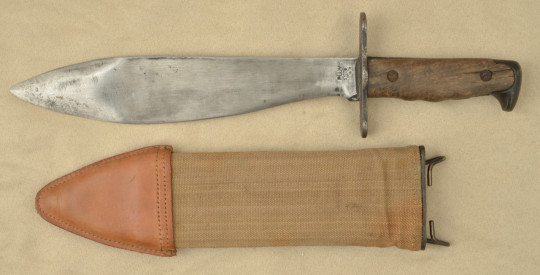#m1917
Text

This weekend I brought out a relic for a little fun. I don't shoot it very much because I hate the cost of ammo and honestly it's not a very fun gun to shoot. Still it's an interesting piece of history.
During the first world war America spent most of the war producing arms and ammo for the allies then when we jumped in we found we didn't have enough guns for our own boys and switching over production would take too long. We needed those guns immediately.
At the time Colt and Smith & Wesson were manufacturing revolvers for the civilian market already so the government told them to make some in .45 ACP to supplement the need for 1911s. This became the Model 1917.
Rimless rounds like this don't work very well in revolvers but the military didn't want to deal with the logistical headache of issuing multiple different pistol calibers. Moon clips were made that clamp around the recessed rim that the 1911 extractor would hook onto. This would give the revolver extractor something to hold onto to pull spent rounds out. It also held the rounds together for faster reloads. Later the .45 Auto Rim cartridge would be developed for the civilian market.
The S&W models came with an extra feature that's pretty interesting. If you look inside the cylinder each chamber has an extra ring cut into it. This allowed the rounds to headspace off of the mouth rather than the rim. The Colt models didn't have this ring. If you tried putting a round in the cylinder without the moon clip it would just fall right through. With the ring if you have some loose rounds and no clips you can still use them. You'll need a stick or a pencil to push the spent brass out which really sucks but it's a little better than not being able to use the rounds at all. Early Colts didn't have this ring but they eventually added them in.
After the war 1911 production picked up and the military didn't need 1917s anymore so they flooded the markets. Later in the 30's S&W manufactured a bunch for export to the Brazilian government.
14 notes
·
View notes
Text

More Great Men - Great Guns from Battle Picture Weekly No. 85 and Battle Picture Weekly and Valiant No. 90 (cover dated 16 October and 20 November 1976). Treasury of British Comics.
#treasury of british comics#battle#battle picture weekly and valiant#battle picture weekly#20nov#16oct#thompson smg#tommy gun#m1 carbine#m1911#alvin york#audie murphy#m1917#moisin nagant#great men - great guns
20 notes
·
View notes
Photo
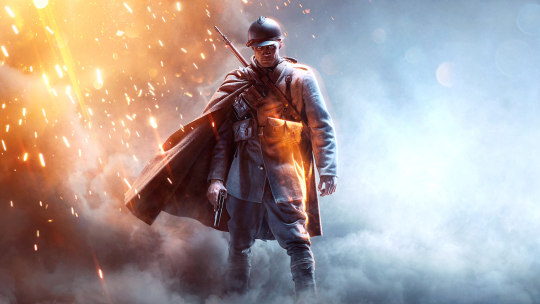
Battlefield 1 (2016)
7 notes
·
View notes
Text
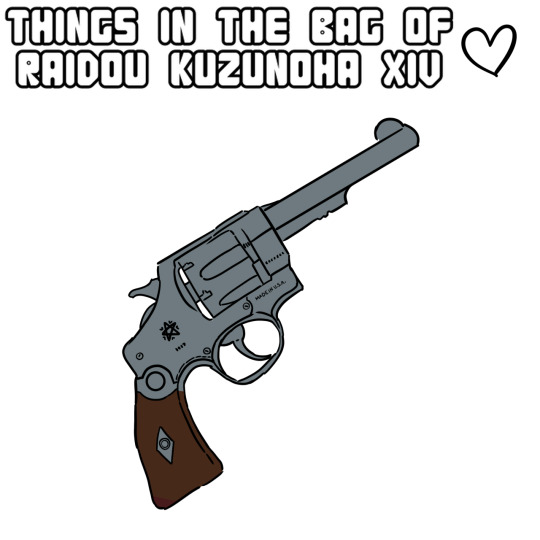
#the gun is a M1917!#canon accurate revolver babey#daily kuzunoha#devil summoner#devil summoner raidou kuzunoha#raidou kuzunoha#raidou kuzunoha xiv
2 notes
·
View notes
Text
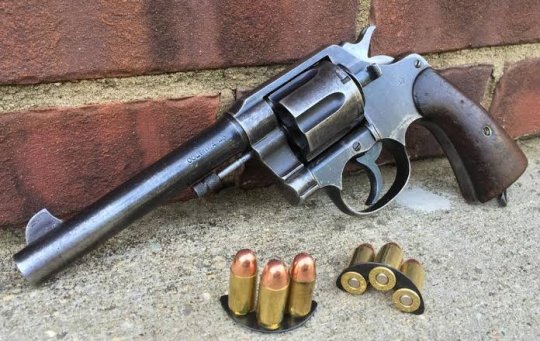
I usually use all kinds of firearms for my assignments, from pistols to sniper rifles, semi-automatic weapons or shotguns. But my favorite weapon is a .45 caliber Colt M1917 with which they murdered my entire family and almost killed me when I was 13 years old. I don't remember anything about that night, only that I used the same weapon with which they executed my parents and brothers to finish them off...
Today it's my Personal Focus, I use it for many of my spells, and also ít's a great weapon!
0 notes
Text
literally the worst thing in the world is having questions but not having the words to ask it in a way that will get you the answer you need.
#hi how the FUCK am i supposed to know obscure uniform details bc i know that OTHER PEOPLE KNOW but#HOW DID THEY FIGURE THAT OUT?#WHERE IS UR SOURCE PLEASEEE#fisherman's ramblings#AND WHY DO SOME PPL HAVE THE AUDACITY TO TELL ME ''just join the army''#ARMY AINT GONNA TELL ME ABOUT M1917 SERVICE COATS GRHRGHEHRGRHBSHRHF
1 note
·
View note
Text

WWII Colorized Photo-"Father Christmas": In this colorized photo by Sanna Dullaway from Sweden, is making his Christmas rounds at Regent Street in London, England on December 23, 1940. (He's wearing an M1917 helmet for protection during the "London Blitz" of 1940.) The original black & white photo is from Life Magazine.
During the London Blitz of 1940 & 1941, the Nazis decided that their bombers should include civilian targets in order to terrorize the civilian population into surrendering to the Nazis. Adolph Hitler thought that, by intentionally killing as many civilians as possible, it would weaken Great Britain's resolve to fight the Nazis. (Some of the German bombers used incendiary bombs to cause as much damage & casualties among the civilian population.) The results of the London Blitz though, was that it only resolved the angry British people to just resist & fight harder.
130 notes
·
View notes
Text
I really like .303 British and 30-06. Both cartridges are heavy hitters and while 30-06 is faster and has more energy than .303 its not that much more. Both have well over a century of use and both have been proven to be able to kill everything on the planet.
For my SMLE from 1916 in .303 British and my M1917 from 1917 in 30-06 I prefer to use 180 grain soft point loads. I don't mind sacrificing a little bit of velocity for a heavier bullet.
When shooting both I don't feel much of a difference in recoil.
I really love century old rifles and standard cartridges
20 notes
·
View notes
Text
【𝕻𝖞𝖌𝖒𝖆𝖑𝖎𝖔𝖓 | 𝕬 𝖐𝖎𝖘𝖘 𝖆𝖚】

(𝕻𝖆𝖗𝖙 18)
Description: Kiss was the perfect name for the infamous bank robbers who kissed everything goodbye to go out in a blaze of glory. Wreaking havoc on 1930s America, what happens when the chase ends?
♥ Paul Stanley x Reader
Note: I actually got Paul's gun type wrong, it's an m1917, i have to go back and recorrect that. But the bank robbery's finally happening. Hope you enjoy!
Warnings: hella anxiety and some violence
𝕽𝖊𝖆𝖉 𝖕𝖆𝖗𝖙 17 / 𝖕𝖆𝖗𝖙 1 / 𝖆𝖔3
You pieced your fingers together over the steering wheel, peeing through the mirror. Gene’s coat swung like a red blotch on white as they strode into the bank. You gulped down your fears. Paul’s smile, laugh, face—all rang in your head—‘but he’ll be fine, right?’
Paul sighed deeply. A couple people laughed and chattered as they followed behind. He relaxed, but he knew his darting eyes weren’t helping anything. A man shoved something in his greatcoat pocket as he slumped out. Gene’s gaze followed. Bobby stepped up. Paul followed. His heart thudded in his tight throat. Cold sweat dripped down his temple.
“Long day at work?” The teller’s happy voice flooded their ears. “You look tired.”
The guy in front of them rambled about his day as the two went about their business. Bobby took a long, deep breath. Gene shifted his weight in the corner of Paul’s eye. Paul clutched his wrist.
“Have a good day!” The teller cooed. The man chuckled and pranced off.
The three stepped up. Paul fought himself not to glance over his shoulder. ‘God.. are they okay out there?’ He thought, fighting not to glance at the window. Pillars of sand gladly took his shaking leg’s place. The person behind them sighed harshly, leaning over. Paul’s gaze snapped to Gene—who shifted his weight again. He loosely crossed his arms, looking down and lightly scratching his elbow.
Paul’s lips pursed.
‘What is he doing?’ His own sharp voice pierced his head. ‘He’s going to get us caught!’
Paul swore he could hear Gene’s heart thudding in his ear. ‘I-’
Gene composed himself. “Why hello there!” The teller’s eyes smiled as Gene leaned over the counter, perching his elbow on it and peering like a hawk down through the golden fence. “How do you do?” Paul peered over Gene’s shoulder. Bobby casually looked over the crowd. The teller was a a round-faced older gentleman, straight out of a silent film. His grin was toxic enough to soothe Paul’s nerves.
Paul looked back. Ace swayed a little, lightly scratching his arm and looking at the ground like a television. Paul’s jaw clenched. His gaze veered off to the guard, who stood in the corner—this man was no older than he was. His gelled brown hair framed his pale face. His eyes were large and brown with a sparkle one would have after falling in love or getting their dream job.
He rubbed the back of his neck, gazing at the polished wooden floor.
“Wonderful weather, yeah.” Gene sounded a little too relaxed. “It’s a shame you can’t enjoy it to its full extent, sir.”
Every inch of friendliness in Gene melted ominous. Gene swallowed hard. The bank teller’s eyes widened, his brows pressing down.
“.. Because this,”
Bobby whipped open his coat, spinning to face the crowd, gun in hand. Gene yanked out his rolling block, tossing Paul and Ace their guns. Paul scrambled to catch his.
“Is a stick up.” Gene finished more shakily and sharply than he would’ve liked.
The teller threw up his hands, stepping back. Bobby crept to the crowd. “Put your hands where we can see em’ and no one gets hurt!” He commanded, booming through the smaller bank. The crowd, angry, horrified or straight-faced did as told. Ace’s eyes widened. Bobby loosely gestured for him to come over. Ace froze on trembling legs.
Paul pushed him reassuringly. Ace jogged. Gene barreled around. CRASH! The gate slammed into the fence. The teller grit his teeth. “Unlock it and no one gets hurt!” Gene snapped viciously, mounting his rolling block firmly on his shoulder. White crowded his irises.
“God—god, here.” The teller quickly muttered, jamming his trembling hand in his pocket.
“Hurry the fuck up!”
Ace’s heart banged in his tightening guts. The thought of a bullet splitting him open haunted like whispers as he dug through the crowd’s pockets. A woman held out a shiny pearl necklace. Ace snatched it, swallowing down an apology. Bobby narrowed his eyes. The alarm was clear as a freshly cleaned window. Paul raced around the counter, snatching anything that even looked of value.
Gene blinked back tears. Ace’s breaths went quick and shallow. Paul stopped, clutching his chest as his lungs refused to drag in any air. Ace stumbled to a stop. “Keep going.” Bobby pushed. Ace stormed to the next man, towering over him.
“Gimme’ what you got.” He growled in his best intimidating voice though he shook like a ship in a sea storm.
The man took a deep, rigid breath. He glared up into Ace’s eyes, straightening himself out. Ace looked down, frowning intensely. “Just fuckin’ do it, make it any harder on you and you’ll be on the ground.” Ace knew he didn’t mean that. Ace grit his teeth-The man spit in his face. “You fucking-”
Gene glanced as Ace shoved the man against the wall.
“Stop!” Bobby snapped.
You glanced in the rear view mirror. Tick. Tock. People bustled past the door. No one bustled out of the door. Your heart jumped. You clutched your chest, fighting a war with yourself for even a pinch of control. Your breathing sped up. You rubbed your temple, setting your elbow on the wheel. You’d long pulled off. Cold sweat trickled down your face.
“You wanna play those fuckin’ games?” Ace quietly questioned. “We’ll see who-”
The teller glanced up. His gaze shot knives into Gene, who clutched his gun. “Hurry up!” He thundered. The teller held his chin up as he strode over to the vault. Gene scowled. Paul shot up, racing around the counter. He swept the sweat off his forehead. Bobby glanced at him. Paul glanced at Ace, who muttered threats to the man.
Paul gave a ‘go ahead’ nod. Bobby rushed to pull them apart. Paul pointed his gun at the crowd. “Please, please don’t hurt them!” A man begged.
“Just don’t do anything stupid and you’ll be fine.” Paul firmly replied though his voice broke like glass being stepped on. His blood pumped like hell, pushing every thought from his head.
“What the hell are you doing??” Gene hissed. “Can’t you go any faster?”
“Have you ever opened a safe?” The teller snapped back before-
“I-I’m going to have to ask you to put that down, sir..” A small voice breaking with terror rang through the room.
Paul’s blood ran cold. The guard stood behind the gate, pistol pointed right at Gene’s back. Gene slowly turned around. The guard wobbled so badly he’d fall into himself. “In the name of justice, the law..” He strangled the words from his throat, taking one hell of a hesitant step closer. Saying his hand shook was an understatement.
Paul’s blood ran cold. His head fell off his shoulders. His vision smeared. His head settled for one last moment of peace before--
BANG!
Then it all went silent.
#bank robbery#kiss band#kiss fanfiction#alternate universe#1930s au#x reader#gangsters#kiss gangster au#haha finally updated#fanfic#writeblr#writing
15 notes
·
View notes
Photo
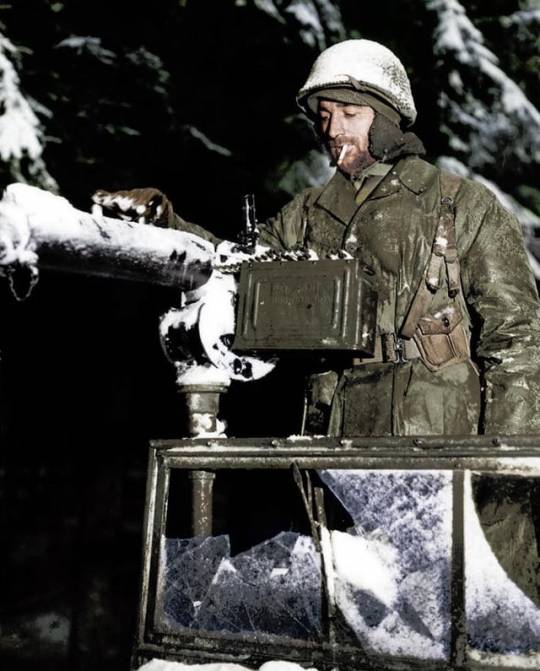
Private Charles Preston, of Nicholasville, Kentucky, brushes snow from a M1917 Browning machine gun mounted on his jeep during the Battle of the Bulge, December 1944
56 notes
·
View notes
Text
Gun store has some milsurps for sale. A non-sporterized M1917 Enfield with sling and bayonet is $2300 and that's marked down from the original price of $2500.
They also have a garand that was $5300 that's now knocked down to $5100.
Have milsurp costs really gotten this insane? I know consignment owners set the price buy why would the store put up a collection of guns that wouldn't move at that price?
41 notes
·
View notes
Note
I'm a slut for some 40k lore, tell me about the funny gas mask men with the shovles
Ah yes, the Death Korps of Krieg.
Krieg is a toxic, radioactive Death World within the Imperium of Man, and it is the homeworld of the Astra Militarum's Militarum Regimentum known as the Death Korps of Krieg.
Known for their common deployment in the war zones of the Segmentum Tempestus and Segmentum Solar, the Death Korps are particularly skilled at attritional trench warfare, sieges of and assaults upon heavily fortified static positions and warfare in extreme environments known for their biological, chemical and radioactive hazards.
Why are they like this? It's simple, nuclear armageddon.
Krieg was the site of a rebellion against the Imperium over 1500 years ago, in response to the rebellion the Loyalists bombarded the surface of the world with nuclear weapons, which was then followed by 500 years of grinding trench and tunnel based warfare between the Loyalists and Traitors.
After those centuries of nuclear destruction and tunnel warfare, Krieg was reduced to a radioactive husk, and its people were forced to live Metro 2033 style in underground hive cities to survive the toxic environment.
This forged them the people of Krieg into grim, fatalistic and dour individuals, and the soldiers of the Death Korps are even more so, they selflessly wade into the most abhorrent war zones satuarated with radiation and other toxins.
The military engagement they're involved are often decades long sieges with astronomically high casualty rates, and only those of Catachan stock are comparable to the men and women of Krieg.
Almost all Imperial Guardsmen from Krieg, save vehicle crews, wear their distinctive and highly advanced respirator units that filter out toxic and radioactive particles.
These gasmasks are a relic of their world, and act as a legacy and reminder of Krieg's eternal service to the needs of the Imperium.
Oh yes, and I forgot to mention, the nuclear armageddon was not a one off thing, the Loyalists didn't just fire the nukes once, they had kept firing nukes for the 500 years they were fighting the Traitors.
Now I don't need to tell you this as it is fairly obvious, the Death Korps of Krieg are modeled after WWI German soldiers, the trench warfare of WWI, while their name means War in German.
The helmet top shares a profile with the French Adrian helmet while the bottom part is clearly inspired by the German Stalhelm.
The iconic gasmask is extremely similar to the British SBR gasmask used during the war.
The bayonet is modeled after the American M1917 Bayonet.
The Lasgun Model 98 is named after the German Gewehr 98.
The breastplate worn by Krieg Officers and Death Riders is inspired by the French Cuirassier breastplate.
The Krieg soldiers retreat when an objective proves too much, is a waste of men and materiel or is a tactical decision to ensure victory.
While this all make sense, have you actually heard of them running in fear? Became they have, on page 72 of Imperial Armor Volume 5, the 158th Regiment of the 12th Line Korps routed due to heavy heretic resistance on the second Vraksian defense line.
They retreated and even fragged their own commissars who tried to stop the retreat.
Aside from that, there are multiple instances of Krieg engineers screaming in fear as they faced Khornate Beserkers, proving that they are not unfeeling soldiers bred for war, their grim outlook is a byproduct of their environment, they aren't soldier who will march endlessly to their deaths, it just takes longer for them to break in comparison to other Imperial Guard units.
That said, I think it's important to consider that the Siege of Vraks, fall of Orpheus, and Dead Men Walking portrayals of Krieg all vary considerably, as each is an interpretation by a different author.
It is hard to picture the automatons of Dead Men Walking or the other short stories by Steve Lyons acting in the same manner as the Krieg soldiers in the routs described in Siege of Vraks.
Outside of those sources there are also occasional examples of Krieg soldiers who are pretty much indistinguishable from cadians in gasmasks.
Unfortunately Krieg soldiers caving in heretic skulls with their entrenching tool is a meme the community came up with and is not canon.

25 notes
·
View notes
Text

the americans designing the six ton m1917 (colorized) - hetamyu shenanigans
below cut: local amateur military historian tells you about the model m1917
The Model M1917 6-ton light tank ("6-ton special tractor") was the first mass-produced tank by the United States. When the American Expeditionary Force made it to Europe by April 1917, they were not in possession of any tanks. The American forces would be loaned French Renault FT tanks and British Mk.V tanks early on, but soon the US would negotiate with the French government to obtain a license to produce the Renault FT (known posthumously as the Renault FT-17, etc.). This license to produce the Renault would soon become a near-copy reproduction, the M1917*. Initially, the US Government would place an order for 4,440 of these light tanks.
Unfortunately, only 950 would be produced before the order was canceled. Of these 950, only 64 would be completed by or before the end of World War I. Of these only two would be sent to France, arriving nine days after the armistice of November 20, 1918. Eight more arrived belatedly in December. No M1917s would ever see active combat service but would find uses elsewhere, such as in tanker academies in France, the United States, and Canada, among other things.
*Not to be confused with several other pieces of US equipment bearing the same designation (i.e., the M1917 steel helmet, M1917 Service Uniform, or M1917 trench boots).
Further Reading If Interested:
[src: 1 | 2 | 3 ]
#hetalia#historical hetalia#aph america#hws america#alfred f jones#hetamyu#gremlin shitpost#gremlin tankposting#gremlin military history
157 notes
·
View notes
Text


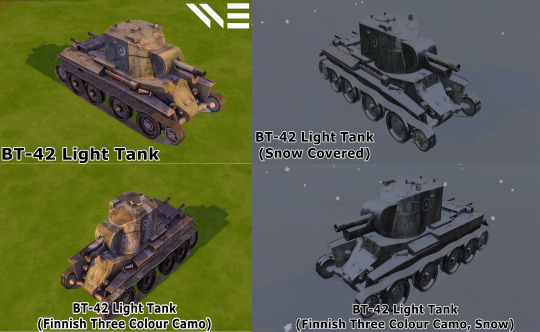








Finnish Army WW2 Light Tanks
One Of My Patron Request and Also Part Of Great Projects about Weapons and Heavy Machinery That Used During Winter War (1939-1940) & Continuation War (1941-1944) About The Finland Wars Against Soviet During during early and later Stages Of World War 2. For Your Informations Finnish Army During WW2 Heavy Machinery During Winter Wars Are Rely On Captured Soviets Tanks, Obsolete WW1 Products Or Licensed Products From Allied Countries
Disclaimer:Due Heavy Censorship Regarding Swastika Usage in Western Society, The Details of The Tanks Are Replaced With Roundel Instead of Finnish Hakaristi. However It Just A Minor Details that May Missed.
DOWNLOAD
Support Me In Patreon for Exclusive Business Agreement Or Support Me In Paypal For One-Time Support
BT-5 Light Tank
The BT tanks (Russian: Быстроходный танк/БТ, romanized: Bystrokhodnyy tank, lit. "fast moving tank" or "high-speed tank") were a series of Soviet light tanks produced in large numbers between 1932 and 1941. They were lightly armoured, but reasonably well-armed for their time, and had the best mobility of all contemporary tanks. The BT tanks were known by the nickname Betka from the acronym, or its diminutive Betushka. The successor of the BT tanks was the famous T-34 medium tank, introduced in 1940, which would replace all of the Soviet fast tanks, infantry tanks, and medium tanks in service.
This Particular Variant is BT-5: Armed larger cylindrical turret, 45 mm 20-K gun, coaxial DT machine gun. Earlier tanks used simpler fully cylindrical bolted turrets with rear bustle welded on.
BT-42 Light Tank
During the WWII, the Finnish Army utilized captured Soviet tanks as their significant armament. Among these was the BT-42 assault gun which the Finnish Army created by pairing the hull from a captured Russian BT-7 Model 1937 light tank with a British 114mm howitzer and a redesigned BT-7's large boxy turret. 18 units were produced from 1943 to 1944 and they were deployed to the Svir River region to attack the Russian bastion. In June 1944 during the Battle of Vyborg, BT-42s saw fierce combat against advancing Russian forces.
Renault FT-17 Light Tank
The Renault FT (frequently referred to in post-World War I literature as the FT-17, FT17, or similar) was a French light tank that was among the most revolutionary and influential tank designs in history. The FT was the first production tank to have its armament within a fully rotating turret. The Renault FT's configuration (crew compartment at the front, engine compartment at the back, and main armament in a revolving turret) became and remains the standard tank layout. Consequently, some armoured warfare historians have called the Renault FT the world's first modern tank. Over 3,000 Renault FT tanks were manufactured by French industry, most of them in 1918. After World War I, FT tanks were exported in large numbers. Copies and derivative designs were manufactured in the United States (M1917 light tank), in Italy (Fiat 3000) and in the Soviet Union (T-18 tank). The Renault FT saw combat during the interwar conflicts around the world, but was considered obsolete at the outbreak of World War II.
This Model Armed with Puteaux SA 1918 37 mm gun While The Other , Equipped With 8mm Hotchkiss Mle 1914 Machine gun for Anti-Personnel Purpose (Not Showed in Review)
KhT-130
KhT-130 is Flamethrower variant of model 1933 which is Variant Of Soviet T-26 Tank, The Most Successful and Most Modular Pre-WW2 Light Tanks using a larger 45 mm gun turret (a gun was replaced with a flamethrower for Anti-Personnel Purpose).
Landsverk L-62 Anti II
Landsverk L-62, also known as Landsverk Anti II or a combination of both, Landsverk L-62 Anti II, was a Swedish self-propelled anti-aircraft gun construction that was specifically designed for Finland by Landsverk between 1941 and 1942.
The vehicle was an improved Landsverk L-62 Anti I where the turret and chassis had been improved for better protection. The chassis was based on the Landsverk L-60 tank but was lengthened with one extra roadwheel per side. The turret was circular and open for a better view against planes. The gun was a 40 mm Bofors L/60 anti-air gun which was already in service with the Finnish military as the 40 ItK/38.
Vickers Mark E
The Vickers 6-ton tank or Vickers Mark E, also known as the "Six-tonner" was a British light tank designed as a private project at Vickers. It was not adopted by the British Army, but was picked up by many foreign armed forces. It was licensed by the Soviet Union as the T-26. It was also the direct predecessor of the Polish 7TP tank.
Hotchkiss H39 Light Tank (German:PzKpfw 38H-735)
The Hotchkiss H39 (a variant of the Hotchkiss H35) was captured and used by Germany as the PzKpfw 38H-735.
The Hotchkiss H35, or Char léger modèle 1935 H, was a French light tank developed prior to World War II. Despite having been designed from 1933 as a rather slow, but well-armored, light infantry support tank, the type was initially rejected by the French Infantry because it proved difficult to steer while driving cross-country, and was instead adopted in 1936 by the French Cavalry. In 1938, an improved version was produced with a stronger engine, the Char léger modèle 1935 H modifié 39, that from 1940 was also fitted with a longer, more powerful 37 mm gun. It was intended to make this improved variant the standard light tank, and was to be produced in a number of at least four thousand in order to equip new armored divisions of both the Cavalry and the Infantry. However, due to the defeat of France in June 1940, total production of both subtypes remained limited to about 1200 vehicles. For the remainder of the war, Germany and its allies would use captured Hotchkiss tanks in several modifications.
Hotchkiss H39 Light Tank (German:Panzerkampfwagen 38H 735(f))
Variants of A Captured Hotchkiss H39 Tank by German, Outfitted with Nebelwerfer 42, A 30mm German Rockets.
Soviet T-50
The T-50 was a light infantry tank built by the Soviet Union at the beginning of World War II. The design for this vehicle had some advanced features, but was complicated and expensive, and only a short production run of 69 tanks was completed.
Soviet T-26
The T-26 tank was a Soviet light infantry tank used during many conflicts of the 1930s as well as during World War II. It was a development of the British Vickers 6-Ton tank and is widely considered one of the most successful tank designs of the 1930s. It was produced in greater numbers than any other tank of the period, with more than 11,000 produced. During the 1930s, the USSR developed approximately 53 variants of the T-26, including other combat vehicles based on its chassis. Twenty-three of these were mass-produced. The T-26 was used extensively in the armies of Spain, China and Turkey. In addition, captured T-26 light tanks were used by the Finnish, German, Romanian and Hungarian armies. Though nearly obsolete by the beginning of World War II, the T-26 was the most important tank of the Spanish Civil War and played a significant role during the Battle of Lake Khasan in 1938 as well as in the Winter War in 1939-40. The T-26 was the most numerous tank in the Red Army's armored force during the German invasion of the Soviet Union in June 1941. The Soviet T-26 light tanks last saw use in August 1945, in Manchuria. The T-26 was reliable and simple to maintain, and its design was continually modernized between 1931 and 1941, with a total of 11,218 vehicles built. However, no new models of the T-26 were developed after 1940.
Soviet T-26E
Variant Of Soviet T-26 tank with additional armour plating (appliqué armour). Some modern sources mention this tank as T-26E (E stands for ekranirovanny or "screened"). The Factory No. 174 developed the design of 30–40 mm appliqué armour for all types of single-turreted T-26s during the Winter War. On 30 December 1939, factory tests proved that the T-26 with appliqué armour successfully resisted fire from a 45 mm anti-tank gun at a range from 400 to 500 m. Side and front armoured plates were mounted with the use of blunt bolts and electric welding. Toward the middle of February 1940, the RKKA received 27 screened T-26 mod. 1939 tanks and 27 KhT-133 flame-throwing tanks; an additional 15 T-26 mod. 1939 tanks were armoured by workshops of the 8th Army in Suoyarvi in the beginning of March 1940. All in all, 69 T-26s with appliqué armour were used during the Winter War and 20 more were delivered to tank units after the end of the war. Combat use proved that Finnish light anti-tank guns could not penetrate the armour of these tanks.
#the sims 4#the sims#the sims 4 custom content#ts4 cc#ts4military#the sims 4 military#ts4#the sim#the sims 4 cc#ts4cc#finland#soviet union#winter war#the sims 4 decades challenge#ts4 decades challenge#the sims 4 decor#russian tanks#Tanks#the sims 4 build#sims 4 decades#decades challenge#1930s#1940s#Sims 4 war#world war 2#the sims 4 ww2#ww2#light tank
36 notes
·
View notes
Text
🇺🇸Army of the United States🇺🇲: a military lookbook

PART II
Spanish-American War (1898): The soldiers wore a khaki uniform with a high collar and brass buttons. This uniform included a campaign hat, and troops often wore canvas leggings and brown leather gaiters.
World War I (1917-1918): The iconic uniform of World War I was the M1917 uniform, commonly known as the "Doughboy" uniform. It featured a flat-brimmed helmet, a tunic, and trousers, all made of olive drab wool.
World War II (1941-1945): The U.S. Army transitioned to a more functional and comfortable olive drab uniform during World War II. The M1941 uniform included a field jacket, a garrison cap, and cargo pants.
Vietnam War (1955-1975): The U.S. Army adopted the M1965 uniform during the early years of the Vietnam War. It was made of ripstop cotton and came in an olive green color. The most recognizable feature was the slant pockets on the jacket.
CC @viktorviolettaenterprises
#sims 4#sims 4 cc#ts4 military#ts4 historical#ts4 lookbook#ww2#ww1#ts4 history challenge#ts4 history cc#viktorvolkenterprises#revolution-sims
16 notes
·
View notes
